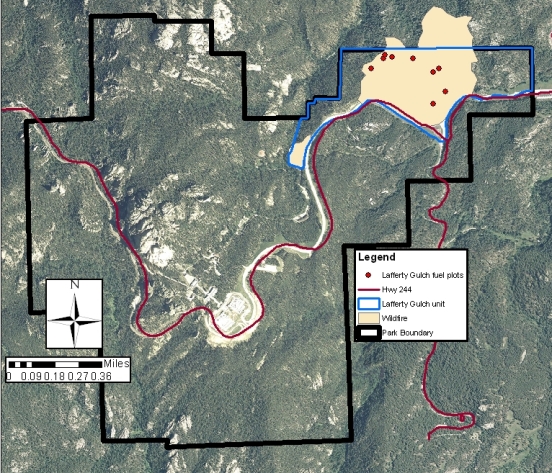


Changes in stand structure and fuel load have complicated the safe application of prescribed fire to ponderosa pine forests. Mechanical fuel reduction has become a necessary first step to reduce ladder fuels and tree density. A restoration project has been completed at Mount Rushmore National Memorial. Tree removal with chainsaw and hand piling of material was utilized. The objective of the project was to cut ponderosa pine trees with a dbh less than 15cm, leaving 10-15 trees/acre in this size class. The 115-acre Lafferty Gulch unit at Mount Rushmore was thinned during the summer of 2003 and much of the unit burned in an escaped prescribed fire in March 2006. Six monitoring plots were established within the unit in 2002 before the thinning treatment with an additional three plots added after the wildfire.

The figure below displays number of stems by size class pre and post-thinning treatment. There was an inverse exponential curve of number of stems by size class prior to the thinning and a more normal curve following the thinning treatment. This thinning treatment significantly reduced ladder fuels, raised average crown base heights, and thus lowered the risk of crown fire.
The figure below shows a 94% decrease in pole density (> 2.5 & < 15.0 cm dbh) and a 7% increase in overstory density following the thinning treatment. Approximately 25 TPA remained in the pole class following the treatment which is slightly higher than the objective of 10-15 TPA.
The figure below displays down and dead fuel loading pre-thin and post-thin/burn for the six monitoring plots that were installed prior to thinning and also burned in the wildfire. Total down and dead fuel reduction was 74% with most of that occurring in the litter and duff. 1000 hr fuels decreased 60% with fine fuels increasing about 30% probably due to small branch mortality from the wildfire.